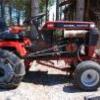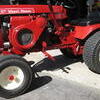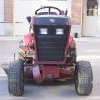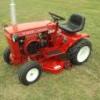Leaderboard
-
in Posts
- All areas
- Markers
- Marker Comments
- Marker Reviews
- Articles
- Article Comments
- Article Reviews
- Classfieds
- Classified Comments
- Classified Reviews
- Wiki's
- Wiki Comments
- Wiki Reviews
- Blog Entries
- Blog Comments
- Images
- Image Comments
- Image Reviews
- Albums
- Album Comments
- Album Reviews
- Files
- File Comments
- File Reviews
- Posts
-
Custom Date
-
All time
November 28 2011 - November 26 2025
-
Year
November 26 2024 - November 26 2025
-
Month
October 26 2025 - November 26 2025
-
Week
November 19 2025 - November 26 2025
-
Today
November 26 2025
-
Custom Date
01/10/2015 - 01/10/2015
-
All time
Popular Content
Showing content with the highest reputation on 01/10/2015 in Posts
-
7 pointsI wanted to stack my 854 ever since I restored it, so I did. Here are photos of this bad boy and some of the support bracket I made.
-
6 pointsDon't worry about that HY-2 unit...there is nothing to rebuilding it if it leaks. I did a thread on that and Indy still has the new seals if you need them. Looks like a 702...I think that is the right deck for it also. That HY-2 unit is selling for over $100 at shows and it looks like all the parts are there. Yes, 500 is too much not running, but if engine is not froze up, I think $150 would be stealing it...$200 to $250 is a good price...I might go as high as $300 (just because I like the 702's), I have a 702 with HY-2 and it is a great starting and running horse. The original rear tires would look like narrow snow tires.
-
5 pointsHope to go look at this tractor next week. Can any of you round hood experts help me identify what it is and what it may be worth? These are the pictures he texted me. Here's what I know. It hasn't been run in 15 years. Was repainted by the current owner who has owned it for the last 16 years. Has sat inside for the last 15 years. Has rear wheel extenders and wrong rear tires. That's all I know. Sent from my tractor seat.
-
4 pointsHappy Bithday Scott !!! Scott is not only a great guy but an expert PHOTO BOMBER!
-
3 pointsWhat else does a retired guy hafta do with his time but make movies! We Got slammed w 18" last night Chucked this morn and probably will later this Eve. Nothing like more seat time! https://www.youtube.com/watch?v=jQKNiU3fOD4&list=UU7wuEBq4kYyHz0ytg3WDv2g
-
3 pointsOut of my garage and into a work space where I don't park cars. It's got heat and air plus lots of light and lots of electrical outlets. Still needs paint, landscaping, entrance ramp and a whole lot inside.Here's a few photos.
-
3 points
-
3 points
-
3 pointswhile I do not have a pickup, I do have some folding ramps. find a hill or curb to try to make the ramps less "ramp" like. don't ride the tractor, instead walk it up and cut the throttle after you get it up onto the bed. less chance of earning the coveted Red Square "Whoops!" helmet.
-
3 pointsHappy Birthday Scott! Hope you have a great day! Craig, thats making my eyes hurt!!!!!
-
3 points
-
3 pointsI know that it has been awhile since I have returned any tools to Sears for replacement (most of my tools are either Mac or Snap-on) but the times that I did I didn't even have to show any proof of purchase. That type of guarantee has got to hurt a company. One can search for broken Craftsman tools at garage sales and flea markets get them for next to nothing and return them for a nice new one or some people feel free to totally abuse them their tools using them for things they aren't designed to do. I know one time when I was getting a ratchet replaced there was some guy returning a bunch of tools that you could tell were clearly abused. Screw drivers bent like pretzels and others ground down to nothing. He also had wrenches that were bent in half obviously done to get into a tight place. I can remember the salesman questioning him on all of these issues and this guy got real loud. He got all new tools and he didn't deserve them.
-
3 points
-
2 pointsN3PUY brought up a subject that has probably happen to all of us one time or another. What do you do when your horse just quits? Now I am referring to winter operations. I am sure some of you, myself included don't just plow or blow your own driveways but do neighbors whether there right next to you or down the road a bit. There have been times I have been traveling to or from neighbors that are a 1/4 mile away or sometimes a bit farther and wondered what would I do if this thing would just quit. There has been times that I was out in the road with the blower down on a hydro and it quit. When your tractor is dressed up in winter gear you just don't push them with ease. I have rescued them with other tractors, 4x4 pickup, farm tractors, even a snowmobile. Just wondering how many of you have been stranded by breakdown far from home base and what you did to get it home or at least out of the way. No fun when you have a blade full of snow or a blower full and your horse just quits.
-
2 pointsMet up with another Red Square Member -Tristan Wilson of Versailles, Kentucky today. We met in Scottsburg, Indiana at the Hampton Inn (about half way for each of us) to deliver a Wheel Horse 42 inch Snowplow and rear hitch attachment that he purchased from me. Great guy and he has a small engine repair shop in Versailles! I enjoyed the short, very cold visit (about 10 degrees) with Tristan and his friend James
-
2 pointsDrill out the pivot point on the throttle and replace with 1/4 inch bolt and lock nut. Problem fixed.
-
2 pointsHere is a picture of me and my buddy, JimD, trying to pull Horsefixer's horse onto the blacktop. This horse will not start when it is on grass. Picture was taken at the Big Show in 2010. Yes, somebody always has a camera.
-
2 pointsDave looks to be a 702 and yes it has the solid tank $500 is too much in a non-running condition Brian
-
2 pointsIn this extremely cold weather an old battery may not have all the cranking power you need. Gasoline might separate a little too -giving water in fuel a chance to be troublesome. I would change plug just to see it that might be issue also.
-
2 pointsWhat is most embarrassing is when the horse dies and someone else has a camera to record the death - and you are on it! Here are three photos my uncle Don Redding (one of those green tractor collectors) took of me being pulled on my 1967 Lawn Ranger by my brother David with his 633 Wheel Horse at the Winamac, Indiana "Power from the Past Show" in 2013. I don't even recall what the issue was but I think it was gasoline related. When you haul these tractors around 100 miles or so they tend to shake loose a lot of the old stuff -me included!
-
2 pointsThis has the makings of a great thread... My avatar is my 314h with a busted drive belt. It snapped 20' or so outside of my garage. I tried to push or pull it back inside. Quickly found myself getting nowhere. The nearest parts store is 30-40 miles away. Used a piece of 3/8" triple braid rope and weaved a belt. It wasn't pretty but did the job. It ended up snapping just inside the garage after climbing the up the 3-4" high step Since then I've hung a spare belt on the wall. I also keep carb kits and spark plugs on hand. Cheap insurance for those rare "O-sh**" moments.
-
2 points
-
2 pointsthat's what cemented my bad attitude toward "lifetime warranties" - how simple it is for the seller to give you a new one. Not a bad deal if you are returning a screwdriver, but what about an auto starter or alternator? 3 years ago, I replaced a funky OEM starter in my wife's car. Within 6 months I had to return the "lifetime warrantied" reman'd replacement due to poor cranking. Pain in the rear to get out and back in but of course it was "free". Within another few months the first replacement starter began to squeal and I ended up replacing another reman'd replacement for "free". Thankfully, this one is still working 2 years later. The point is even tho the starter replacements were "free", my time isn't and I lost a few nice fishing days to putting "free" parts in my car 3 times over. Same with wrenches, etc. That trip to HF isn't "free" when you swapout your "free" replacement wrenches. In fact, when gas was more expensive and an F350 was the only vehicle around to use - well - I don't want to be reminded how much it cost me to get "free" replacements.
-
2 pointsNo body does it like you Duke! I enjoyed it all, tractor video and the tunes! Hey, come June are we gonna see a pony tail?
-
2 pointsexcept for harbor freight... you know you are buying cheap junk, you break cheap junk, you take it back and get free junk... It will take a long time for that to change...
-
1 pointDuring my recent project I decided to build an engine stand for Kohler single cylinder rebuilds, this is what I came up with.
-
1 pointNot to sound negative but, I have three plows at the ready and pray for no white, wet, cold, nasty stuff! Rather graze on grasses! But you warm blooded Horse-A-Holics go for it! The Horses like snow....what's wrong with them? They eatin' too many fermented apples or what?
-
1 pointWhen you increase the throttle speed the cable is pulling on the governor spring. You need enough friction in the lever pivot to overcome that tension so the lever stays where you put it. The bolt and Nylock nut works great because you can reach in there with 2 wrenches and adjust the tension as needed as it will continue to wear with use. Garry
-
1 pointGreat meeting Horse-a-Holics! And for a great cause too!
-
1 pointIts always nice to see these great old threads pop back up. Especially ones as nice as this. Matt
-
1 point
-
1 pointThis is a good topic. While the Wheelhorse is a TOUGH tractor, it's sheet metal hood, fenders and steering wheel aren't exactly made for pushing the tractor around like some other color tractors. As I get older, my back is letting me know that one of these days if I lift, push or pull to much, it's going to strike back with long term debilitating pain! If it were my Dad, at the age of 82, and he broke down a couple blocks from the house in deep snow, the walk back to the house could be a challenge. So I limit my snow plowing/blowing to my dead end street these days. The easiest to retrieve is a gear drive. The Eaton hydros with no real bypass are a challenge. Nothing to push on, once y do start pushing, they are hard to push or pull. I guess maybe one could use another tractor to tow the downed tractor - if you had another driver. Perhaps a small trailer with a winch on it where you could load the tractor and bring it home. All of the above is great, but I recommend multi-tractor depth in numbers and just leave the downed tractor in a snow pile until spring and get out #2 or #3 and keep moving the snow..... Bill
-
1 point
-
1 point
-
1 pointAs Far As Gauges Go ~ Indoor Cab Temp ~ Outdoor Temp ~ Time ~ Full Load Amps Being Used ~ Voltage Output Reading From Charging System ~ Fuel Tank Level ~ Vacuum ~ Oil Pressure ~ What Frequency Radio Station I'm Tuned To ~ FM or AM ~ Volume Level ~ Tachometer ~ Hobbs Meter (Hours On Tractor) ~ Various Indicator Lights Giving Safety Switch And Different Systems Information ~ And last but not least.(WARP SPEED)
-
1 pointI don't know what's cooler, the tractor or the video... OK, it's the tractor.
-
1 point
-
1 pointOne from Orlando, Florida. and one from Ocala, Florida. This one is kind of faded though. Midway Tractor
-
1 pointlets see 8 btu needed to raise 1 gallon of water 1 degree 2o gallon tank needs 20 x 8 or 160 btu per 1 degree temp rise at 22f outside temp you need 160 x 10 or 1600 btu to maintain 32f in tank 1600 btu / 3.4 watts per btu equals about a 500 watt heater Steve is right, extra washing soda does not help the electrolysis action but it does lower the freeze point of the water even further i imagine a 26 f freeze point would not be unreasonable with additional wash soda added. a 6 degree rise in temp would only require a 250 watt heater. subtract another 5o watts contributed by the electrolysis action and a 200 watt heater may keep your 20 gallon tank operational down to around 20F the passive techniques of added washing soda and ping pong balls only work to a certain degree Uno pun intendedO
-
1 pointI was talking to my cousin "Eight Ball" Iron about my E tank experiences. With all that's cooking around Old Iron's house lately, it seems like I'm always spending time cleaning up the re- bar anode rods in my e-tanks. "Eight Ball" said give the lads a challenge - have them design a re bar cleaner !! Soooo.. think of this - design a box, with a hole in it, a hole that you could put a dirty rebar into and have it scrubbed clean. I'm thinking a box with a cheap angle grinder spring loaded against a hole in which you would insert the corroded rebar. Turn on the grinder. inset and twist the rebar and the corrosion on the rebar would be scrapped off the rod and deposited in the attached trash container. Sounds simple. But for several projects all going on at once and all involving E cooking . this could be a great addition to our tool arsenal.
-
1 pointExactly Sir, Setup(s) with an capital S I have 3 different setups for different uses. SoreKiwi showed us the (currently) World's Smallest E tank, made from a yogurt container Stig sparked our imaginations with the 250 gallon Hindenburg Mark 1 Many more efforts are recorded here in various "Goldy locks" sizes - not too big and not too small. That's the beauty of E tanks. The tanks can be made any size and really any shape from a variety of materials. My tanks include a variety of Tupperware containers - a 5 gallon for smaller pieces - a 25 gallon for mid sized pieces and a large and somewhat flexible 50 gallon "toughie" garbage can that can be stuffed with oddball pieces such as fenders pans. The 50 gallon flexible container will deform enough to allow larger pieces to fit. I just removed a fender pan from one last night and inserted most of the vacuum attachment for lawn cleanup back into the same tank. Always something cooking in the E- tanks at Iron's house ! Be creative too. The rubber liner used for backyard goldfish ponds can easily be framed with 2x lumber to create special shapes and sizes of e-tanks. I was considering making a tank 3 ft x 3 ft x 8 inches deep just to to do seat pans. You could create a 5 ft x 2 ft x 1ft enclosure to do frames. Long skinny pieces could be set in a sluice pipe sliced in half and lined with the rubber pond liner. The possibilities are endless. I have to admit I have never tried Evaporust. I can't even guess what reaction takes p;ace with the iron. Its seems to be a neutral ph - so its not acid. No odor - so its not heavy into volatile solvents. Maybe someone knows if its just an oxidation process with something like a jelled hydrogen peroxide solution - I have no idea. I looked at their MSDS sheets and all the health risks are at "0"'s. About as dangerous as water !! As far as cost comparisons, a 24 hour period of derusting in the E tank - lets say at a 5 amp flow = 5amps x 14 volts = 60 watts of power. 24 hours x 60 watts = 1.44 kilowatt hours. So if your paying say 15 cents per kilowatt hour 1.44 x 0.15 = 22cents worth of power consumed. I would say E tanking will be much cheaper than the Evaporust process. Of course you need 4 - 5 pieces of rebar, a plastic garbage can or container and a battery charger. So there is a few dollars involved if your starting from scratch. The one GREAT ADVANTAGE I see to the e-tank is rust removal is accomplished at a molecular level - left in the tank long enough, all red rust is converted to black rust which can easily be brushed or washed off the object. I do use chemical stripper on my hoods to remove 90% of the paint. Then I put them in the E tank which removes 98% of the paint and rust. Then a quick shot with coal slag blast media and the part is rust free at a molecular level, with little wear on my blast media and compressor setup. I let the stripper do the hardest part of the work and its very quick indeed. Any other questions, please let me know. And good luck with your rebuild / refresh or restoration. :party:
-
1 pointThe iron will be in one of two "rust states"- ferrous or ferric- depending on the amount of oxygen attached to each molecule of iron Ferric (red rust) has 3 oxygen molecules and the electrolysis process changes the red rust to ferrous (black) iron (having only 2 oxygen molecules). Ferrous (black) iron is soluble in water. That is why you can wipe the black rust off a finished part with a wet rag but couldn't wipe off the red rust from the same part before you put it in the tank. Ferric (red) iron is insoluble and will precipitate (form a solid) as an orange/yellow compound called yellowboy ( this I know from growing up in mining town USA, Scranton Penna). Yellowboy causes the orange sludge coatings on the bottom of the electrolysis tank. and finally ... When the red rust is all changed to black rust, the reaction stops (current decreases) I have no idea how rust converter paint works - or if it actually does work well. :thumbs:
-
1 pointRick, I'm right there with you on the hands on approach, Visual and touch is the way I learn best but I always like to follow up what I learn with a little bit of theory ( usually acquired from the page searches of Google) some ciphering and gazintes. And when theory matches real world experiences, then the smile forms on my face. :notworthy:
-
1 pointcall me anything but don't call me late for dinner maybe I'll compromise and settle for CHUCKLE or possibly CHOOGLE but thanks for the kind words - its all really quiet simple once you look at each factor individually and play with one factor at a time glad to help :notworthy:
-
1 pointChris, everything in electronics is based off a simple equation called Ohms Law E = I x R E = voltage - your battery charger voltage ( about 14 volts) I = amperage or the reading on your battery charger gauge (lets say 10 amps) R = resistance in ohms determined by a few "physical factors" in your E tank. so lets say your charger's indication is 10 amps on the gauge E = I x R 14volts = 10 amps x Resistance to figure resistance between the positive and negative connections in your tank - transpose the formula to read E/ I = R 14 volts ----------- = resistance in ohms 10 amps so 14 / 10 = 1.4 ohms - this is the equivalent resistance of ALL pathways between ALL electrodes and the part you are processing. Current will DECREASE if 1/ you remove some of your iron flats from the + connection to your battery charger 2/ your battery charger leads are corroded and do not make good contact with the iron flats or your part you wish to derust 3/ the "red rust" on your part is all converted to "black rust" and the process is finished 4/ you move your + iron flats further away from the object your derusting 5/ your iron flats become "gunked up" I'm sure there may be another one or two reasons I can't think of here at 2 a.m. a few tips ... adding additional washing soda to the tank will not derust the part faster - the water is saturated with washing soda at about 1 cup per 5 gallons - 1 or 2 tablespoons per gallon will work fine - think of it as adding more sugar to water to make it sweeter - only so much sugar can be dissolved before it precipitates out of the water - the rest is wasted money. the size of the tank does not directly determine amperage drawn from the battery charger - amperage is directly related to surface area of the part being processed and the surface area of the iron anodes you surround the part with. More water only equates to more amperage if it allows more surface area of the part and the anodes to be exposed to one another thru the water/ electrolyte. so for all practical purposes .... anode surface area + derusting part surface area = total battery current (the distance from the anodes to the derusting part varies the total current but not in a very linear fashion - doubling the distance from the anode to the part does not halve the current but it will decrease it.) So .... pick the size of your tank to match the part you need to process. surround the part with sufficient anodes to allow all surfaces of the processed part to be in "line of sight" to one or more of the anodes (on your tank I might suggest bending one of the anodes in an L shape so it lays across the bottom of the tank to derust the bottom of the part hanging in the tank) position the anodes as close to the rusty part as possible - separate the anodes from the rusty part if you start to exceed the amp capacity of your charger. Always leave some space (1 - 2 inches) between the part and the anodes to allow for bumping of the tank or slight movement of the rusty part within the tank. check your current flow on the charger gauge - if it's near the max setting of your charger, your good to go if you have say 5 amps flowing and have a 10 amp charger, you can add more anodes to the tank. Remember, smaller parts will not develop a large current flow - you have to have a lot of surface area to get higher current flow. Derusting a nail will not produce the same current flow as derusting a fender pan with several square feet of surface area. remember - its the CURRENT that makes the process work - the more current flow, the faster the part will derust. THE MORE CURRENT FLOW THE GREATER THE RELEASE OF HYDROGEN GAS PER UNIT OF TIME - meaning a higher hydrogen gas concentration is going to be present in the area of the tank. Mainly a concern only in enclosed areas.
-
1 pointJust found a great source of 50 amp battery clips for a reasonable price ordered these from http://www.mpja.com/prodinfo.asp?number=16445+BC obviously available in black too. For .59 cents - you can't lose considering these clips may need to be replaced on a regular basis if you have an electrolysis tank. Great grip and just the right size to place over rebar.
-
1 pointChapter 2 - Starting the Circuit Board Repair I had an opportunity to repair a few of the corroded traces on the indicator board last night. I'm happy with my results on some connections and not at all happy with others, this one I'm happy with - just wrapped a wire around the lamp post and soldered the ends of the wire to the good section of the corroded trace - then soldered the wire to the post - this reestablished + 12 volts to the rest of the indicator bulbs. the same trace still had many open areas further up the board, so I flipped the board over and daisy chained a wire to each indicator lamp post that needed +12 volts. instead of this but now the bad news..... I lifted one of the traces from several attempts to re-solder the indicator posts - the solder joints always looked cold and ragged so the pad finally let go - not a problem really - somewhat expected and the edge connector trace that was half eaten away needs to be redone - this will never fit into the edge connector.I will need to obtain a piece of adhesive backed copper similar to what is used on stained glass - glue it to the board and eliminate the wire in this photo that causes the lump to form (the lump is my poor craftsmanship - but it does give a good example of the wrong way to do the fix). Stayed tuned - parts are on order. Tomorrow while we wait for parts, I'll do a quick review of how to check out diodes and transistors with an ohmmeter. :scratchead:
-
1 point64s, don't know but I would say you'll have to take them out of the electrolysis tank first !! :scratchead:
-
1 point
-
1 pointJerry, this wasn't a post for "only real men use digital voltmeters". Just trying to get some perspective if someone asks for help troubleshooting the electrics of the tractor , generally speaking, what tools do they have available to do the troubleshooting. Thanks for your perspective tho - valid as anyone else's.


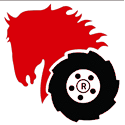





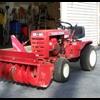



.JPG.9f2ecb26065c66527b0730084ab7fc7a.thumb.jpg.7dc8a04d9a53d44ee2b23f26ee94496f.jpg)

